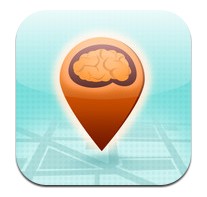Since our first coverage of local Q&A app LocalMind, we recently had the chance to catch up with its founders about its new changes to the service. This comes a few weeks after its v2.0 release and one year after the company’s SXSW launch.
First, it’s probably not fair to just call it a local Q&A app without qualifying further. The app lets users query nearby individuals to ask location-specific questions such as “how crowded is the bar?” or “what are the specials today?”
This mixes a little bit of Foursquare, Yelp and Quora to provide a local discovery engine that’s built on connecting peer-to-peer interactions. But one challenge here is local’s classic chicken-and-egg issue — there have to be enough questions and answers to attract either side.
To help scale this, the company has expanded the product in v2.0 to surface content beyond just time-sensitive questions and answers. So instead of having its relevance be tied so closely to time — leading to rapid information “decay” — it is surfacing different local experts.
In other words, content becomes more perennial by better indexing different local voices. As part of that it’s doing a better job algorithmically determining subject matter or location-specific “experts” to whom certain questions are distributed more prominently.


This expert factor can weigh greater in any algorithmic matching, when compared with the previous ranking factors of time and place. And moving beyond time and place gives the content and the interactions more of a lifespan, thus scaling better.
“We’re expanding the expiration date of the content,” says CEO Lenny Rachitsky. “[It was] initially one specific point and a relevant amount of time, but now expands to neighborhoods or cities, and that information is valuable for months.”
To further scale, it is also utilizing Foursquare’s API and Facebook Connect. This helps the company better plug into “passion communities” for which the new expert-driven approach applies, and where there is heavy engagement.
Rachitsky names possible content areas as singles looking for things to do, events, protest, sporting events, travel, real estate, etc. The unifying thread, he claims, is a “social object” — a common interest that is a lighnting rod for peer-to-peer interaction.
“We provide that social object as a conversation starter,” he says, “and once people start talking, interesting things happen.”
Rachitsky tells me that since the v2.o release, question volume is up 900 percent and conversations happening through the app (beyond initial Q&A) are up 1,200 percent. Next up is monetization, which he says could involve connecting users with expert SMBs.
“We know what you’re looking for,” Rachitsky says. “Just like Google can target ads at you, we have that same opportunity.”


This Post Has 0 Comments